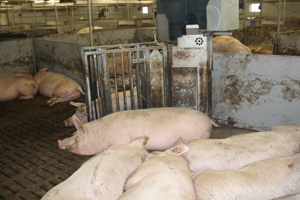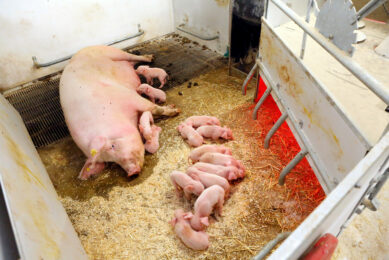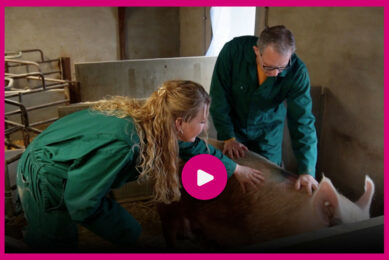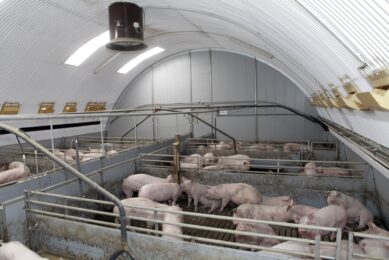The 2013 sow housing deadline – an update

Around the world, many people approach me with the same question. What will happen in 2013 when the EU legislation for sow group housing will have been introduced? Will the new EU directives be maintained? What countries do comply and which don’t? Are percentages available? What about prices?
If anything can be said it is that asking these questions is easier than answering them. First some facts: The European Directive 98/95/EG states that breeding sows should be kept in group housing as from 28 days post-insemination until one week before the anticipated moment of farrowing. In addition, there are requirements with regard to floor quality, slat width and surface per pig (0.65 m2 per finisher until 110 kg and 2.25 m2 per gestating sow).
So far what is the same for all. Translating into national legislation, as well as maintaining the new laws is work for each individual member state. In addition, collecting data, checking and interpreting these depends on the commissioning organisation as well as the approach used. Sometimes it is difficult to compare conversion percentages from one country with an other – and often conflicting data even circulate. Still, I’ll try to give an overview – and I quote market researcher Robert Hoste (Wageningen University) more than once, who wrote an excellent analysis in the magazine Varkensbedrijf.
Conversion rates
For some countries, there wasn’t a lot of work. In the United Kingdom or Sweden where a tradition of animal welfare has been existing, swine breeders had already complied with the new rules before they were announced.
Some other countries chose to translate the European directive into even stricter national legislation. In the Netherlands, for instance, the government required a release into group housing after four days instead of after 28 days. The same can be said about surface guidelines for individual pigs, as this shall be different from country to country – from e.g. 0.7 m2 in Austria to 1.02 m2 in Sweden.
To stick with the group housing conversion, the latest conversion figures teach that apart from the UK and Sweden, three countries are reported to have converted 100% of its sow farms to group housing: Luxemburg, Austria and Estonia.
Northern Europe
For the remaining 22 countries, one can say in general, there is a difference between the the countries in Northern Europe and those in Southern Europe. In Northern Europe, those countries that do not meet 100% will most probably get quite close to it.
In the Netherlands, most recent figures point to a 88% conversion – and a 93% conversion by January 1. The state secretary for agriculture stated that of the remaining 7% about 5% is expected to shut up shop and 2% will not meet the required deadline.
In Flanders, the northern region of Belgium where the vast majority of pigs are concentrated, the Flemish prime minister reported a conversion rate of 63% in September – and projected a conversion rate of 93% by January 1. Other figures, as stated by researcher Robert Hoste, point to much lower conversion rates of about 49% by January 1.
The Danish Veterinary and Food Administration stated that 94% of its swine industry will be converted by January 1. The majority of the remaining 6% will be converting in the first four months of the new year.
Germany is expected to get close to 100% as many smaller swine breeding farms will quit. The Czech Republic is also reported to be almost completely converted. In Ireland a 60% conversion is reported by Robert Hoste – and a submission scheme for application has been extended to ensure that as many pig producers as possible will meet the deadline.
Southern Europe
In Southern Europe, many countries have not been able to give guarantees about meeting the deadline.
Spain reports relatively good figures as agricultural organisation COAG reported that 85% of the swine breeders will comply with the rules. This is related to the fact that swine production is often organised in large integrations.
In France, however, researcher Robert Hoste estimates that 45% will have converted – which comes down to 45% of sows as well. He adds that it is expected that a large number of breeders will stop or switch to finisher production.
The same projection can be given for Italy. Autumn figures, supplied by the Italian Association of Pig Breeders (ANAS) indicate that over 50% of its breeding farms still needed to convert – or about 1,500 farms. 88% of farmers want to comply with the rules.
Portugal is reported ‘far from completely converted’ by researcher Robert Hoste.
Less information is known for the Eastern European countries. Larger farms will have converted, the smaller farms will often not have been converted.
Consequences
Two questions now remain to be answered. First, what are the short-term consequences of the deadline? In other words – what will be happening to those farms that will not have converted? The European Union learnt some lessions of the conversion to cage free production in the egg business, on January 1, 2012 – as a similar situation occurred there. Many were not ready and had to ask for extra time. In the swine business, both the EU and member states have been more pro-active in reminding those farms and countries that did not meet the deadline.
In his analysis in Varkensbedrijf, Hoste said that in theory, the EU could impose market restrictions for pork grown at of non-complying breeding farms, but in practice it is very complex to track and trace these pigs.
Maintaing new legislation is therefore a matter of national governments, Hoste wrote. National governments can do this by direct policy and interventions – but he also points to Denmark and Germany where farmers have to comply with a quality of production scheme. Breeders who don’t will receive a lower price for their pigs.
Longer-term consequences
And secondly – what will be longer-term consequences? This will mostly affect matters of sow numbers and prices of pork. It is expected that the number of sows will be reduced between 5-10% in comparison to 2011 sow numbers. This will be felt in the number of piglets sold and eventually the number of slaughter pigs coming to the market. This, surely for 2013, could be good news for both countries waiting to export to the EU, as well as for those in Northern Europe, where business can go on as usual.











